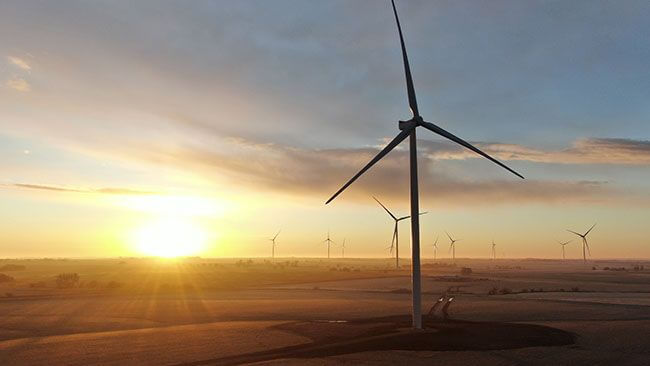New National Lab study: Wind projects bring substantial revenue to schools
Within two years of completion, a wind project helps deliver approximately $1,000 per child in new revenue to the local school district. This increase in revenue grows to between $1,500 and $1,800 per child several years after installation.
Jesse Broehl contributed to this post.
Wind energy has grown substantially in the United States over the past decades, contributing ever-greater revenue to states and local jurisdictions, including school districts. Within two years of completion, a wind project helps deliver approximately $1,000 per child in new revenue to the local school district. This increase in revenue grows to between $1,500 and $1,800 per child several years after installation.
These are among the key findings from a new Lawrence Berkeley National Laboratory (LBNL) report released that examines the impacts of wind energy on school district revenues, expenditures, resource allocations, and student achievement. The study uses data on the timing, location, and capacity of wind energy installations in the U.S. from 1995 through 2017 and correlated school district data. In 1995 wind energy was just getting started in the U.S. and only 16 school districts had wind projects installed within their boundaries at that time. By 2016, wind energy production had spread across 38 states, affecting 900 school districts.
Because most school districts in the United States are independent jurisdictions with their own taxing authority, when a wind energy installation begins operation within the boundaries of a school district, the district will typically benefit financially from the expansion of its property tax base.
The sums reaching local jurisdictions and school districts are formidable. Wind projects represented 39 percent of new commercial energy installations in 2019 alone, and this generated $1.6 billion in revenues to states and local jurisdictions. These are steady ongoing revenue streams with most wind projects operating at least 20 years, and many new projects installed today are projected to run for 30 years or more, delivering revenue certainty to local school districts.
Total expenditures increase by between $1,500 and $2,000 per child several years after installation of a wind farm. Districts spend a significant share of the revenues toward increased capital spending, such as new or upgrades to school buildings and grounds. This increases by $500 and $1,000 per child after wind energy comes to the district. Current expenditures (teacher salaries and other operating costs) increase only slightly, by between $200 and $300 per-child.
The report authors say that the larger increases in capital rather than operating expenditures are likely the result of school finance laws in many states requiring a reduction in state aid when local revenue placed in the general fund is used to finance operating expenditures. However, these finance laws do not require a reduction in state aid when local funds are placed in the capital fund. This incentive for school districts to spend the money on capital expenditures over operating costs caused “dramatic increases in capital expenditures” and modest increases in operating expenditures relative to normal overall spending.
However, needed capital spending can often impact operating budgets, so the bottom line is that hundreds of school districts all across the country are receiving much needed new revenue from clean wind power, which also mitigates global climate change impacts that today’s students may inherit.
Much more data is available from the full study, “School District Revenue Shocks, Resource Allocations, and Student Achievement: Evidence from the Universe of U.S. Wind Energy Installations” and located at this link. A webinar, with the authors, covering the results of the study is scheduled for 1 PM ET / 10 AM PT on Friday, March 26, 2021. Registration link here.

